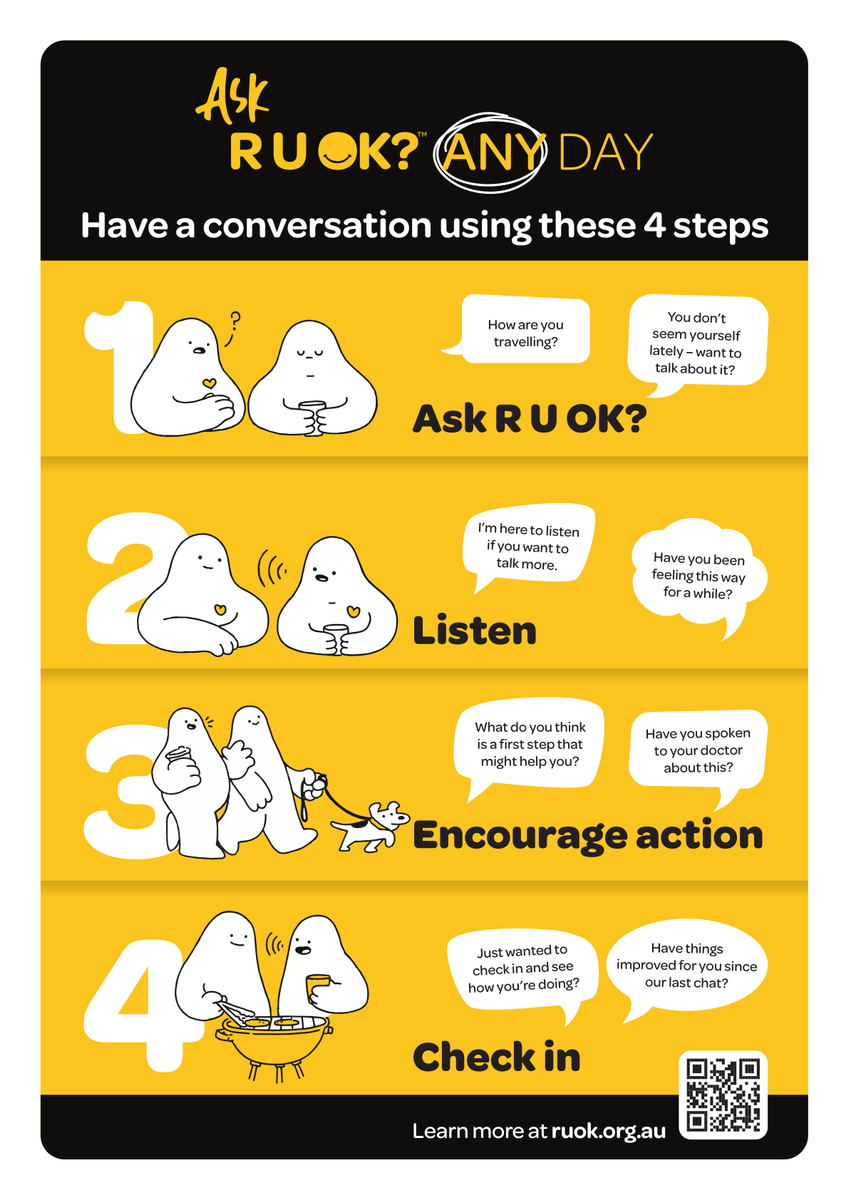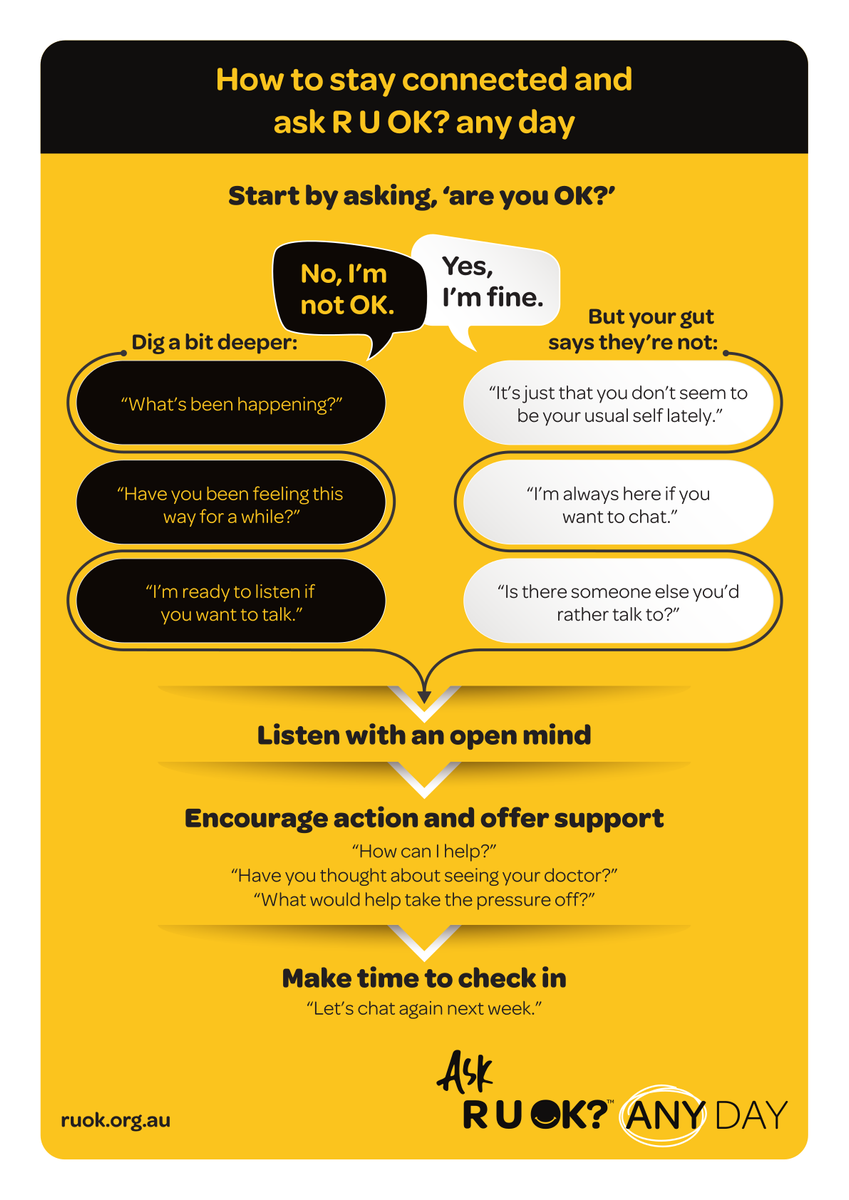Student Wellbeing
The Wellbeing Team: Felicity Brown, Isabella Farrar, Pat Pekin, Lucy Wright
Assistant Principals - Cody Gunn and Michelle Lynch

Student Wellbeing
The Wellbeing Team: Felicity Brown, Isabella Farrar, Pat Pekin, Lucy Wright
Assistant Principals - Cody Gunn and Michelle Lynch




EV_Day_24_Conversation_Guide_240709-905549f8.pdf (cdn-website.com)
We would like to extend our heartfelt thanks to the entire school community for your generous donations to the BayCISS Pantry Partner Food Drive. Your contributions will make a significant difference to those in need within our local area. Together, we have shown the true spirit of community and kindness. Thank you for your ongoing support!
As role models for all our young men of our school community, we understand the difficulties this can bring and the modelling of expectations and behaviours that they need to portray to become positive citizens whilst understanding how their behaviours affects others.
Please find this valuable article, written by Dr Ray Swann, from the Positive Masculinity Foundation.
Encourage your boy to understand how he affects others—without starting a fight.
I’ve worked with boys and young men for years, and I’m still amazed at how easy it can be to set off a volatile reaction. With my own son, I’ve found it hard to know when to speak up and when to keep my mouth shut. We must socialize our boys—it’s part of our role as parents. But it sometimes seems we’re endlessly nagging them. Without meaning to, we trigger invisible tripwires, and the result is—combustion!
So here’s what I came up with. Imagine you have three “cards” a week to play with your boy. A “card” is your moment to insist on something. This means you can’t use them all up on trivial things. That’s up to you. Maybe you let the socks on the carpet go—but he must speak with respect to other people.
Boys must learn to consider how their behaviours impact their environments. We all know men who have not learned how to regulate their emotions: To paraphrase Dr Robert Moore, they are “high-chair tyrants.” We need boys and young men to take responsibility for their actions and to grow into healthy male adults.
As an educator and coach I remind boys it is totally fine to feel angry and to express it in healthy ways. Here’s a simple test: Any person should be able to stand next to an angry young man and still feel completely safe.
As we know, this isn’t the case. So what is going on?
Emotional regulation
As we mature, we need to develop self-regulation. Self-regulation is how we manage our feelings and behavior within a social context. It can take time, and for boys and young men, a few factors can impact the rate at which the penny drops.
Some researchers suggest that the pre-frontal cortex (the part of the brain that helps to regulate our thoughts, emotions, and actions) takes longer to develop in boys. Other researchers refer to behavioral rather than physiological reasons for the delay. This is due in part to the way boys learn to be successful in the modern world. They learn that success is being stoic, bottling things up, and being “unfeeling.” Another compounding factor is the difference in literacy levels between boys and girls, with boys around 15 being almost a year behind on average in standardised tests. Literally, boys don’t yet have the words to express their feelings.
But no matter the reason for the delay, we can all agree boys must manage anger and think things through, and parents, coaches, and teachers play key roles.
Emerging practices
Interpersonal communication and conflict can be high-stress. Increasingly, practitioners are using what I would call “dialogic structures” to support these complex exchanges. Put simply, a dialogic structure is a bit like a script or a way to frame a conversation so that we don’t become lost in emotion or stress. They are simple frames for guiding conversations. Structures like these have been used in high-stress environments, like medical education, through coaching programs.
These “talking approaches” can really help calm things down.
When we consider that, either biologically or behaviorally (or both), young men need a little help in thinking things through, it makes a lot of sense to utilize a dialogic structure to support them. Its easier for the adult, and its a lot less threatening for the young person.
So, let us take a look at one that works.
The WIN model
WIN is an acronym for a talking approach to help boys, parents, teachers, and coaches manage difficult conversations. It aims to slow things down and remove shame. It maintains a sense of agency for the boy or young man and creates a move toward a positive action. It’s easy to remember and helps to frame what can be tricky territory.
Let us walk through it:
W — What’s going on?
There are lots of ways you can start, but the first place is to connect and ask, “What’s going on?” or “Hey, what’s up?” Imagine you are asking for something to happen, and you are greeted with anger, but rather than react, you can simply ask, “What’s up?” Even in more difficult situations where a boy or young man is doing something anti-social, you can still ask it in an innocuous and non-judgmental way.
I — Impact
This part of the conversation helps them see their impact: “I can see you’re swinging on that tree branch. What do you reckon will happen if you continue?”The key for this step is not to judge (in tone, facial expression, or other way). It is purely you providing the question that enables the young person to join the dots. Sometimes, this step can take a couple of attempts. The strategy here can be to simply repeat back the answer:
N — Next Step
Once you have a bit of a connection to what is happening and the impact, you can start to look at what might need to be done next. Again, don’t judge—it’s pretty unlikely in the heat of the moment that anyone is going to say, “I need to apologise,” but the point here is that there is a connection to consequences.
W: “Hey, what’s up?”
“Nothing….”
W: “I heard you swearing at your sister. You OK?”
“Yeah….”
I: “Can I ask—if you swear at her, what do you think will happen?”
“Dunno…”
“You don’t know?”
“Well… she might get pretty angry, I guess.”
N: “What do you think might need to happen next?”
N: “I dunno—maybe I’ll just avoid her for a bit.”
In the example above, the next step is not restorative but positive. It calls for a time out and a bit more space, which will help prevent the conflict from escalating.
Using this WIN model enables productive dialogue to help shape healthier relationships. I would love to hear how it works for you!